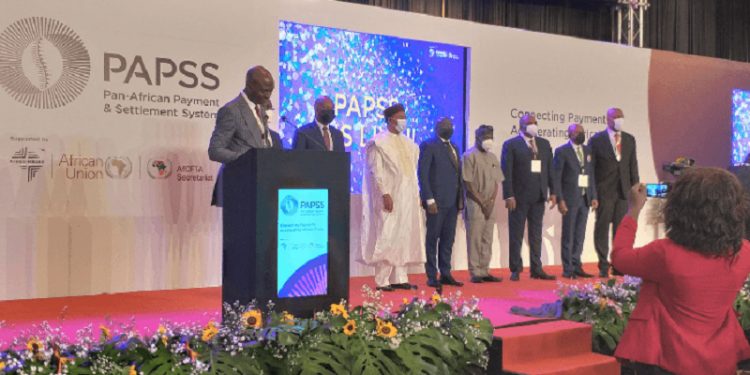On Thursday, January 13, 2022, the highly-anticipated Pan-African Payment and Settlement System (PAPSS) was launched in Accra, Ghana, to the delight of traders, and other stakeholders in the continent’s business chain.
Speaking at the launch, Governor Godwin Emefiele of the Central Bank of Nigeria (CBN) described it as a breakthrough achievement for the continent.
According to the apex bank’s chief, amongst other things, the PAPSS would help facilitate trade and enhance payment gateways across West Africa.
“CBN will ensure the financial institutions under its jurisdiction accept PAPSS and recommend it to businesses across Nigeria,” he promised.
Understanding PAPSS
Floated by African Export–Import Bank (Afreximbank) in collaboration with the West African Monetary Institute (WAMI), it serves as a centralised payment and settlement infrastructure designed to aid intra-African trade and commerce payments.
This financial infrastructure was designed to redefine cross-border transactions for ease and safety, such that risks and costs are reduced to the barest minimum. Whether you want to ship, transfer money, pay your workers’ salaries, or making high-value transactions, you are advised to consider PAPSS as it guarantees you instant payments, and it’s less costly.
Why this infrastructure?
- It will facilitate payments as well as formalise some of the unrecorded trade due to prevalence of informal cross-border trade in Africa.
- It will also provide alternative to current high-cost and lengthy correspondent banking relationships to facilitate trade and other economic activities among African countries through a simple, low-cost and risk-controlled payment clearing and settlement system.
How it helps consumers
- The instant payments works is so effective across African borders, such that they don’t have to convert different currencies.
- Consumers are exposed to various payment facilitating options.
How PAPSS works
Afreximbank explained that PAPSS can only function through three processes, which are highlighted below:
Instant payment for households and businesses:
Individuals and businesses can visit an authorised participant (commercial bank) from any African country. After which, the bank sends payment to PAPSS, who validates the payment instructions sent. The beneficiary bank receives validated payment instructions from PAPSS. The recipient receives payment in local currency.
Pre-funding by direct participants:
This process is to ensure safe transfers for both parties (sender and receiver) based on pre-funding agreements from participants. After payments instructions have been sent to PAPSS by the direct participant.
Direct Participants integrate directly with PAPSS and the real-time gross settlement (RTGS) systems of central banks in the pre-funding process. Participants without an RTGS account – Indirect Participants(without settlement accounts) — can fund or defund their clearing accounts on PAPSS with the aid of a Direct Participant providing the required liquidity.
Notifications are carried via the ISO 20022 messaging standard, notifying PAPSS, the Participants and RTGS of the status of every stage of the transaction.
Settlements to simplify transactions in local currency:
The settlement goes through key institutions such as Afreximbank, PAPSS and central banks. How?
It determines the net position in local currency for all participating central banks. The payment platform sends credit or debit settlement instructions to Central Bank’s real-time gross settlement system (RTGS) — depending on net position.
Central Bank RTGS debit or credits between PAPSS pre-funded account and Central Bank suspense account and confirms settlement to PAPSS.
Aside from mirroring central bank’s instruction to conclude local currency settlement, the financial infrastructure issues equivalent hard currency settlement instruction (based on the net position) to Afreximbank.
Afreximbank credits/debits the central banks’ hard currency settlement account held in Afreximbank and confirms it to the portal.
Transactions are completed in a maximum of 24 hours and monitored by participants.














